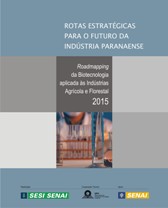Notch another victory for synthetic biology. Researchers report today that they’ve engineered a common laboratory plant to produce the starting material for a potent chemotherapy drug originally harvested from an endangered Himalayan plant. The new work could ensure an abundant supply of the anticancer drug and make it easier for chemists to tweak the compound to come up with safer and more effective versions.

Throughout history, people have relied on plants for medicines. Even modern drugmakers get about half their new drugs from plants. But that’s harder to do when plants are slow growing and endangered, as is the Himalayan mayapple (Podophyllum hexandrum). The short, leafy plant was the original source of podophyllotoxin, a cytotoxic compound that’s the starting point for an anticancer drug called Etoposide. The drug has been on the U.S. market since 1983 and is used to treat dozens of different cancers, from lymphoma to lung cancer. Today, podophyllotoxin is mainly harvested from the more common American mayapple. But this plant is also slow growing, producing only small quantities of the compound.
Mayapples churn out podophyllotoxin to defend against would-be munchers. To do so, the plants use a step-by-step approach to synthesize their chemical defense. But because the synthetic pathway of the compound had never been worked out, no one knew precisely which genes were involved in stitching together the molecule. What researchers did know was that podophyllotoxin isn’t always present in the plant. “It’s only when the leaf is wounded that the molecule is made,” says Elizabeth Sattely, a chemical engineer at Stanford University in Palo Alto, California, who led the current research effort.
Sattely and her graduate student Warren Lau reasoned that the podophyllotoxin-building proteins were likely themselves only made by the plant in response to an injury. So the pair made tiny punctures in the leaves of healthy Himalayan mayapples provided to them by a commercial nursery, testing them before and after to see which new proteins appeared around the damaged tissue. They discovered 31, which they categorized by probable function.
The pair then narrowed the likely candidates for enzymes in podophyllotoxin production by focusing on members of four classes known to carry out the right types of chemical reactions. They then spliced genes for each of these enzymes into bacteria known to infectNicotiana benthamiana, a fast-growing relative of tobacco that serves as a sort of lab rat of plant biologists. The bacteria readily infect tobacco and insert their genes into the plant tissue. Sattely and Lau inserted numerous combinations of genes for the enzymes they thought might produce their desired compound. As they report online today in Science, they eventually hit on a group of 10 enzymes that allowed the plant to make a molecule called (-)-4’–desmethyl-epipodophyllotoxin, a direct precursor to Etoposide and a potent cancer drug in its own right.
“It’s a great piece of work,” says Sarah O’Connor, a biological chemist at the John Innes Center, a plant research institute in Norwich, U.K. Eventually, the new work may give drug companies a stable, abundant supply of their cancer-fighting drug, and it may give rise to similar compounds that could work even better.





Envie para um amigo